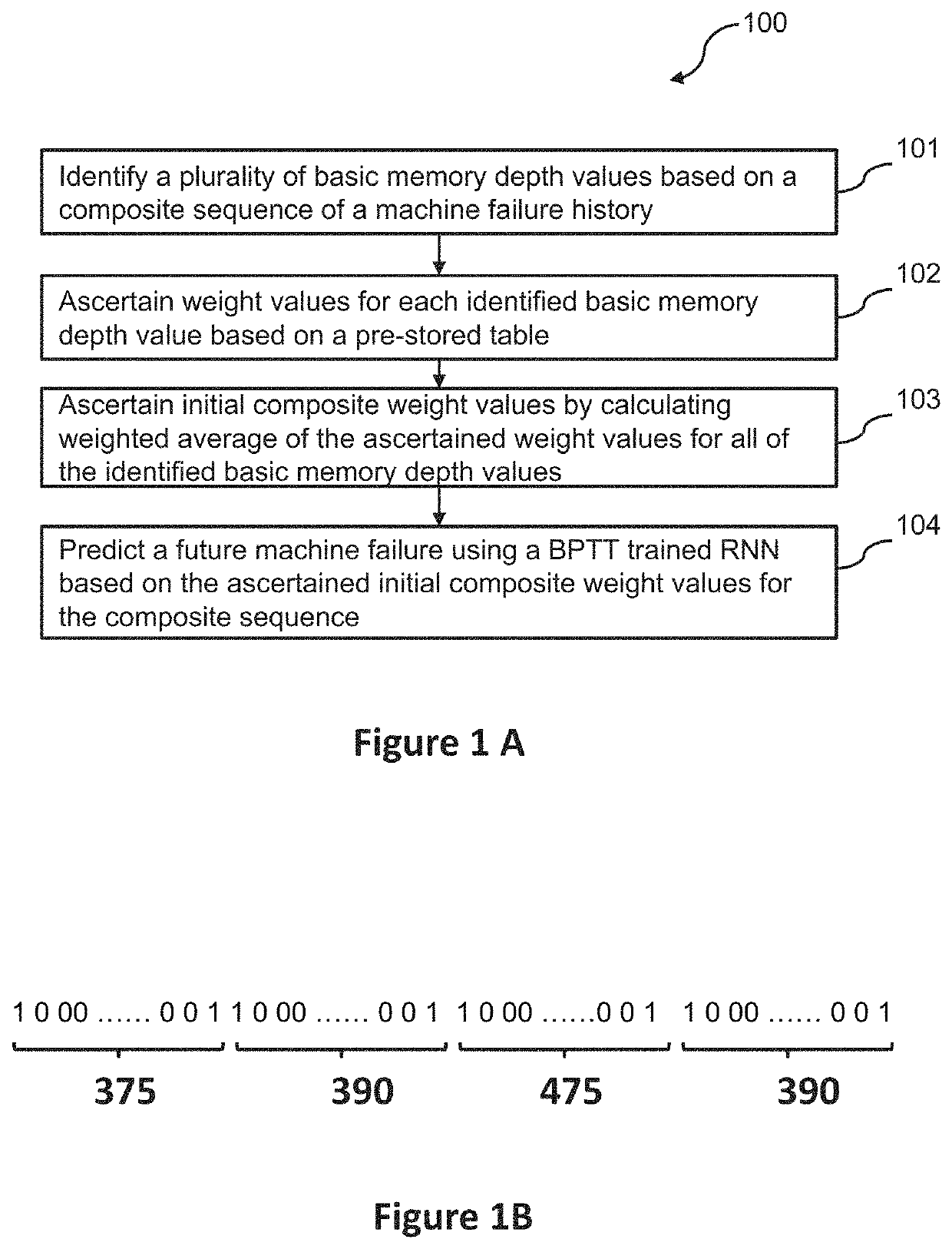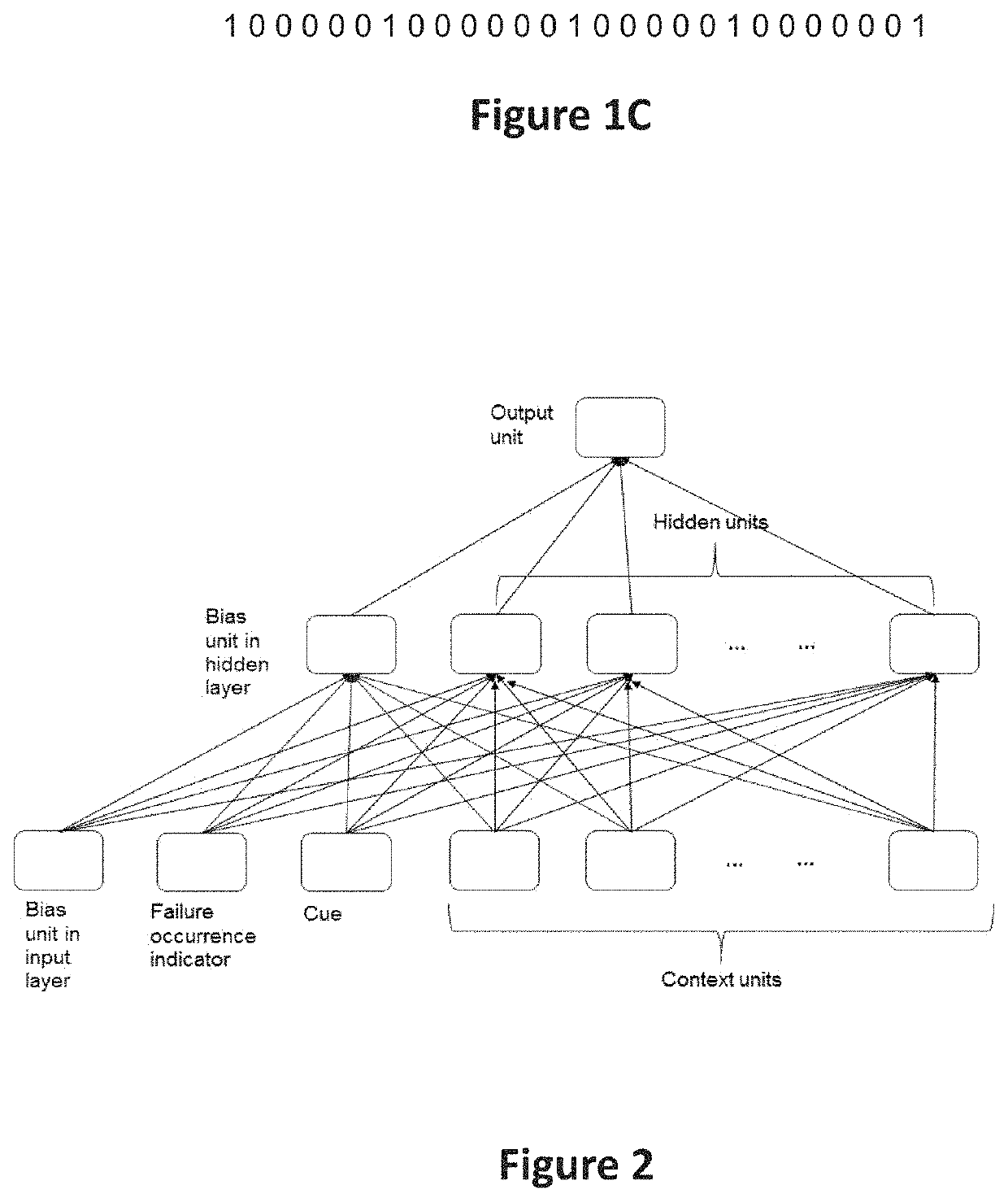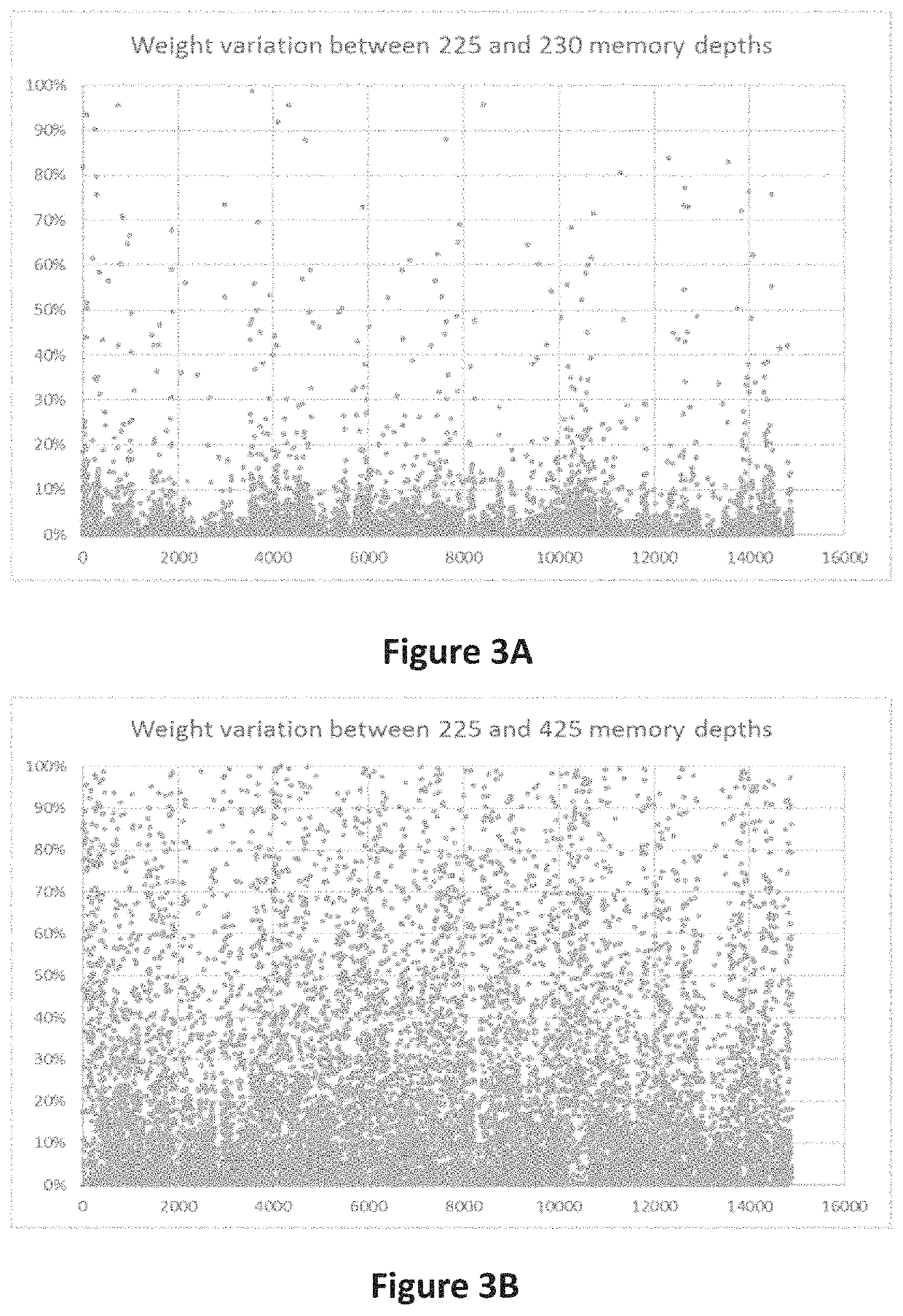Method for machine failure prediction using memory depth values
- Summary
- Abstract
- Description
- Claims
- Application Information
AI Technical Summary
Benefits of technology
Problems solved by technology
Method used
Image
Examples
first embodiment
[0038]FIG. 1A is a flowchart illustrating a method 100 for predicting a machine failure according to the invention.
[0039]In block 101, a processor in a computer identifies a plurality of basic memory depth values based on a composite sequence of a machine failure history.
[0040]FIG. 1B shows an example of a composite sequence of a machine failure history. In this sequence, 0 represents negative failure indicator, i.e. there is no machine failure; 1 represents positive failure indicator, i.e. there is a machine failure. The composite sequence includes a plurality of different basic memory depth value. Each basic memory depth value refers to the number of zeroes between two successive positive failure indicators. As shown in FIG. 1(b), in this example, the composite sequence includes three basic memory depth values: 375, 390 and 475.
[0041]In addition, it is to be appreciated by a skilled person in the art that the composite sequence of a machine failure history may be inputted by a use...
second embodiment
[0075]FIG. 8A is a flow chart illustrating a method for predicting machine failure according to the invention. In this embodiment, the composite sequence to be predicted includes only two basic memory depth values as shown in FIG. 8B.
[0076]In block 801, a processor in a computer identifies the two basic memory depth values from the composite sequence of a machine failure history.
[0077]As shown in FIG. 8B, the composite sequence in the embodiment includes two basic memory depth values: a smaller value 8 and a larger value 15.
[0078]In block 802, the processor in the computer retrieves weight values for the smaller value 8 of the two basic memory depth values from a pre-stored table.
[0079]It should be noted that in this embodiment, the pre-stored table is generated using the iterative method mentioned above.
[0080]In block 803, the processor in the computer generated six intermediate composite sequences. Each of the intermediate composite sequences includes two basic memory depth values...
PUM
 Login to View More
Login to View More Abstract
Description
Claims
Application Information
 Login to View More
Login to View More - R&D
- Intellectual Property
- Life Sciences
- Materials
- Tech Scout
- Unparalleled Data Quality
- Higher Quality Content
- 60% Fewer Hallucinations
Browse by: Latest US Patents, China's latest patents, Technical Efficacy Thesaurus, Application Domain, Technology Topic, Popular Technical Reports.
© 2025 PatSnap. All rights reserved.Legal|Privacy policy|Modern Slavery Act Transparency Statement|Sitemap|About US| Contact US: help@patsnap.com



